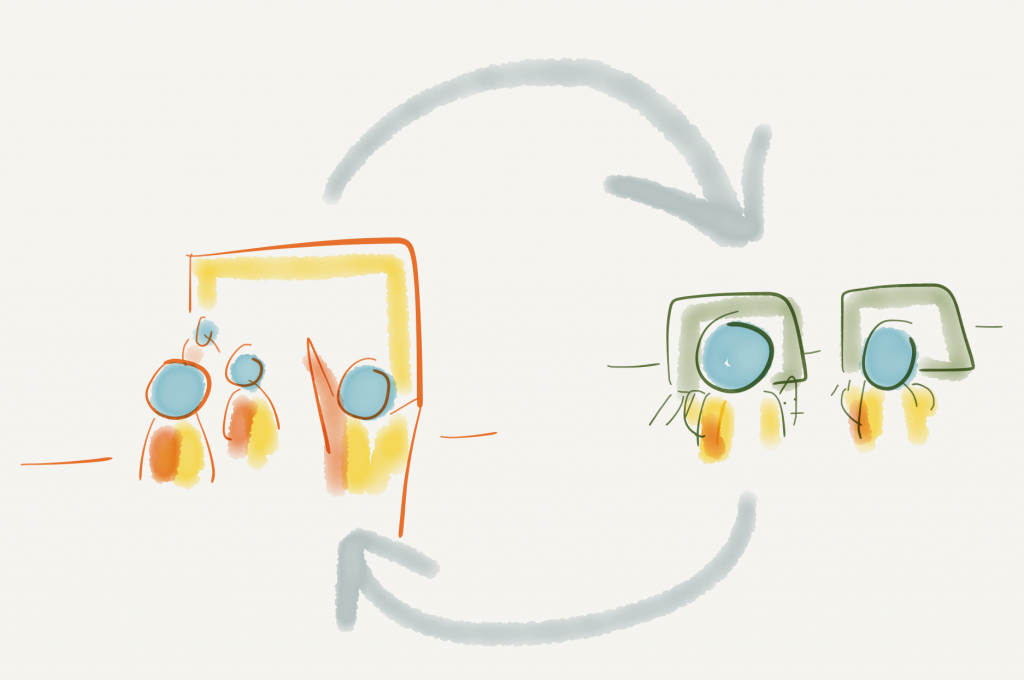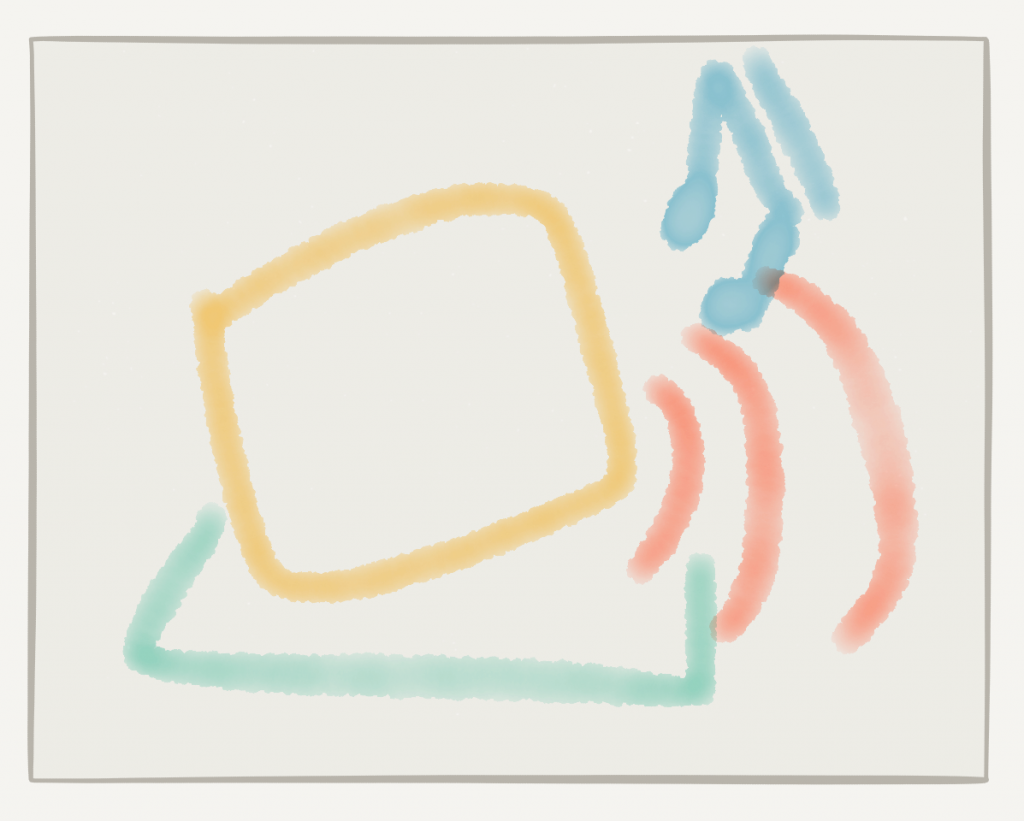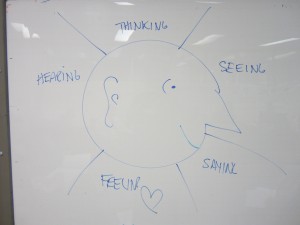Nancy’s Note: In June I was lucky to help facilitate a couple of events for UN University at eLearning Africa in Dar es Salaam, Tanzania. One of our panelists was the wise and warm Adejare Amoo from Nigeria. Adejare’s role was to illuminate how business can be part of innovating in eLearning in Africa. In preparation for his part in our “fish bowl” exercise, he drafted an outline that I really appreciated. Because we did not have time to cover all his points, I invited him to do a guest post on my blog. I think Adejare is my FIRST guest post since I started this blog May 26, 2004. I will also post a few reflections from eLearning Africa in a subsequent post.
As for Adejare’s post I love this line: “The higher education institutions in Africa need to follow the industrialists’ innovation concept and good practice policy, whereby they start their projects on a clean slate, think big, start small, fail quickly, and scale fast, using ICT. Above all, the higher education institutions in Africa should adopt and adapt “open innovation policy” which has helped the industry to grow, just as it has helped most of the higher education institutions in the developed nations to use e-learning pedagogy for quality mass education production which has positively impacted their environments’ development.” Read on! And thanks to Adejare!
 AN INDUSTRIALIST’S ROLE IN HIGHER EDUCATION IN AFRICA
AN INDUSTRIALIST’S ROLE IN HIGHER EDUCATION IN AFRICA
I am an e-learning entrepreneur, a highly innovation promoted and real time evolving industry. I am based in Nigeria, the most populous nation in Africa (about 150 million population). Students as well as research & development results are identified as the products and services from Higher education institutions in Africa. However these products and services form a core input in the industrialist’s production process system. In effect, the industrialist is a major consumer of higher education products and services.
Furthermore, as a major stakeholder in higher education system in Africa, the industrialist sponsors some relevant higher education research and developments programmes, as well as some relevant higher education projects –academic and non-academic, such as infrastructural developments. Some of the industrialist’s employees are parents and relations to the students, whose progress is of utmost importance to the industrialist’s organisation>. In addition to being a donor, the industrialist is a network builder in higher education system. As a council member, he contributes to higher education policy and practice formulation.
HOW AN INDUSTRIALIST FEELS INNOVATION IS NEEDED IN HIGHER EDUCATION IN AFRICA
Innovation has been identified as turning new ideas into beneficial and/or profitable products and services. It is characterised by information and communications technology (ICT) driven experimentations and sharing of ideas.
Higher education system in Africa is confronted with some challenges. Both the admission and carrying capacities of the higher institutions are too low to satisfy the high demand for quality mass education delivery required to develop their environment. Most of the institutions stick to their own obsolete ideas and practices, without allowing for other innovative ideas and practices from outside their institutions. These institutions are starved of adequate funding. In view of the self contented policy and practice in most African higher institutions, support assistance could not be readily obtained, since the donor partners could not understand their challenges. Most of the higher institutions in Africa are yet to apply technology in their education administration and delivery. The prerequisite solution to these challenges is radical innovation.
The industrialist also needs innovation of his company’s products and services to improve on customer satisfaction, satisfactory return on investment (ROI) to the investors/shareholders, and efficient as well as effective social responsibility performance as a corporate citizen. The stakeholders desire innovation in the company’s products and services, and which innovation must come from all the inputs in the production process. Such inputs include the identified higher education products and services, i.e. qualified manpower and research & development results.
Expressed mathematically, “Summation of innovation of process inputs equals innovation of products and services.”

INDUSTRIALIST’S GOALS IN INITIATING OR SUPPORTING INNOVATION IN HIGHER EDUCATION IN AFRICA
he industrialist’s primary goal is to achieve his organisation’s set vision, mission, and values. This is, most essentially, to be and remain no.1 profitable producer of his company’s quality products and services, as well as fulfil the company’s good corporate citizenship responsibilities, through innovation. The industrialist also aims at achieving the planned innovation objectives and strategies for the organisation, products and services, through innovation from the higher education products and services as part of the inputs. As a corporate citizen, the industrialist needs to fulfil the organisation’s responsibility in promoting innovation of higher education process system, plantation of entrepreneurial seeds for generation innovation, as well as promotion of the organisation’s image and network.
INDUSTRIALIST’S MAIN STRENGTH OR ASSET INPUTS TO HIGHER EDUCATION INNOVATION PROCESS IN AFRICA.
From the point of view of comparative contemporary policy and practice in the higher institutions in the developing and developed nations, it will be observed that most of the universities that make the first hundred leading universities global ratings worldwide employ the application of the above mentioned innovative characteristics, i.e. information and communications technology (ICT) driven experimentation and sharing of ideas in their administration and academic operations. The ubiquitous internet technology application has facilitated sharing of ideas and good practices such that the entire world is reduced to a digital village, with respect to the higher education institutions in the developed world. This must have been borrowed from the successful high tech companies, which believe and practice the idea that companies should make greater use of external ideas and technologies in their own business and allow their own technologies and ideas to be used by others. (Henry Chesbrough, UC Berkeley). In Practer & Gamble (P & G)’s “Use-It-Or-Lose-It Programme” innovation strategy, after an internally generated innovation has been successfully applied within the organisation for three years, it is thrown open to other organisations that could benefit from it. The higher institutions could benefit from such strategy.
The high tech industrialists have capitalised on the above mentioned innovation driving forces to make a significant impact in the higher education institutions, most especially in the developed nations. To the industrialist, innovation is a revolution. It involves high risk taking, along with high failure probability result, and to be undertaken by all stakeholders. The industrialist considers this phenomenon as part of innovation game. It provides opportunities for continuous experimentations as well as controlled frequent and rapid changes. For instance, Microsoft’s innovation strategy allows its employees to spend about 20% of the company’s time on controlled experimentation of their personal innovative ideas, that could positively contribute to the company’s benefits and ROI to its stakeholders. The company accepts that about 50% of such experimentations could fail. Furthermore, Microsoft provides high tech tools and equipment to some higher education institutions, in Nigeria, for their digital/computer labs. On the other hand, while implementing its “Innovation Research Programme” strategy, Hewlett Packard (HP) votes a huge amount of dollars to sponsor research projects in the higher education institutions annually and use the generated results in its products and services innovation. In the industry, consumer generated innovation is assuming a greater trend. Similarly, the industry should generate innovation from the higher education institutions, being the major consumers of the products and service, i.e. the students and research & development results.
As the industrialist commits so much resources into promotion of innovation in the higher education institutions, the challenge of ownership of proprietary rights of products and services resulting from such research and development activities, undertaken by the institutions, could become important and controversial issues. This is where mutual and collaborative understanding should be embraced by both the higher education institutions and the industry.
The industrialist possesses and provides financial support to the higher education institutions, through grants, endowments, foundation, donations, scholarship, sponsorship for conferences, etc. Relevant examples of such donors in Nigeria include Microsoft, HP, Intel, Nestle, Shell, Chevron, and Dangote, among others. The company possesses relevant technology and infrastructure. Provision is made for both the students and teachers to access the industrialist’s technology and infrastructures such as laboratory for research and development. Places are provided for students/teacher industrial work experience, as well as for sabbatical work experience for teachers. Collaborative exchange programme between the industrialist’s staff and student/lecturers is promoted. The industrialist is involved in higher education institutions’ social and academic extra-curricular activities, building and sustaining network between the industrial group and the higher education institutions. Promotion of socio-cultural activities engages the industrialist. The company initiates and participates in community development programmes such as health, poverty alleviation, capacity building facilities, etc. The industrialist organises competitions and quiz and also provides facilities for entrepreneurial skills acquisition to be shared with relevant students/teachers.
INDUSTRIALIST’S NEEDS TO HELP MAKE IT HAPPEN
To effect the innovation, the industrialist will require collaboration and cooperation from higher education institutions leaders and the entire institutions’ community. Collaboration and cooperation from other stakeholders in higher education innovation — parents, NGO’s, and socio- cultural organisations, will be relevant. Open access process policy and practice will enhance “open innovation”, which will involve sharing of technological developments and information, as well as ideas. High quality support/participants and manpower, with positive attitude, integrity, creativity, interpersonal relation, etc will be of mutual benefit. The industrialist will be a member of the governing council of the higher education institutions, where policy and practice are formulated. The industrialists will be represented on all relevant government’s boards and high powered policy and practice formulators, to make audible voice.
The government will provide motivation in terms of tax rebate, recognition and other incentives, which will include conducive business environment — infrastructure, power supply, transportation means, peace, safety, security, etc. Funding from equity, loan and/or grant will be highly required.
CONCLUSION
The higher education institutions in Africa need to follow the industrialists’ innovation concept and good practice policy, whereby they start their projects on a clean slate, think big, start small, fail quickly, and scale fast, using ICT. Above all, the higher education institutions in Africa should adopt and adapt “open innovation policy” which has helped the industry to grow, just as it has helped most of the higher education institutions in the developed nations to use e-learning pedagogy for quality mass education production which has positively impacted their environments’ development.
Mine is just to provoke more contribution on the way forward to quality mass higher education delivery in Africa, using e-learning pedagogy and other information & communications technologies, for accelerated and sustainable development.
I don’t pretend to have all the answers to the challenges confronting quality mass education delivery for development in Africa.
Engr. ADEJARE AMOO
ABOUT THE AUTHOR – ADEJARE AMOO
Engr. Adejare AMOO is a Consultant/Managing Director of CorporateMind Associates Nigeria Limited, engaged in blended education, through their website www.corporatemind-elearn.com and a learning/study centre . This is in support of accelerated and sustainable realization of the goals of the global socio-economic development programs such as MDG, and EFA. The targets of his social entrepreneurial effort cover the disadvantaged communities , such as the youths, girl child, the physically challenged, and the women , among others, in the developing nations.
He retired from Nigeria’s oil and gas industry in 2000 after 27 years work experience. He did an ICT Certificate course on e-Commerce to support his passion for ICT in education. He is currently the Chairman of the ICT Group, Lagos Chamber of Commerce and Industry. He participated in the stakeholders workshops organized by Federal Ministry of Education, Nigeria, on education reform programs in 2006 to 2010. He participated in the eLearning Conference in Paris, and in EDUCA Berlin, as well as in the eLearning Africa Conferences between 2005 and 2010.He participated in the Second Science With Africa Conference in Addis Ababa, 2010. He participated in many international online education forums and webinars, including the e-Learning Expert Online Forum 2009, organized by UNU-ViE, Bonn.
He is currently the Nigeria’s ambassador to WWW.SCIENCE-CONNECT.COM NGO. He authors and publishes the Nigeria wiki-page on the NGO’s website. He has a very strong international network. He is bilingual with proficiency in English and French languages. A youths mentor and a community leader, he is married with children. His ambition is to dedicate the rest of his life to support the less privileged in the developing nations, using ICT.
 Introduction
Introduction An early insight was that what you choose to do depends on your target audience and what they want or need to learn. (Or what YOU want them to learn!)
An early insight was that what you choose to do depends on your target audience and what they want or need to learn. (Or what YOU want them to learn!) 



